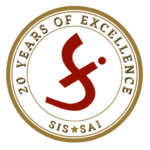These Are Our
Services

Inspection
SAI is committed in catering the existing needs of our customers. SAI believe in the philosophy of “Client First.” This means that we are not only meeting our client needs by using all Relevant Equipments & Standards, we also clear our prestigious Clients’ queries in NDT & welding, also anticipating their requirements to provide a stream-lined individual service. We also ensure that, we constantly encourage our customers by facilitating them with unique Service. After careful analysis of situation, SAI has the Facilities to make auto machines for NDT testing according to ‘Client Requirement.’
01.
LIQUID PENETRANT TESTING
Based on the properties of capillary action, or the phenomenon of a liquid rising or climbing when confined to a small opening due to surface wetting properties of the liquid, Penetrant testing is used for finding surface breaking discontinuities on relatively smooth, nonporous surfaces. Parts with complex geometries can be inspected easily. Indications are produced directly on the surface of the part providing a visual image of the anomaly

02.
MAGNETIC PARTICLE TESTING
Used for finding surface/near surface defects in ferromagnetic material, Magnetic Particle testing (MT) is a versatile inspection method used for field and shop applications. Magnetic particle testing works by magnetizing a ferromagnetic specimen using a magnet or special magnetizing equipment. If the specimen has discontinuity, the magnetic field flowing through the specimen is interrupted and leakage field occurs. Finely milled iron particles coated with a dye pigment are applied to the specimen. These are attracted to leakage fields and cluster to form an indication directly over the discontinuity. The indication is visually detected under proper lighting conditions.

03.
ULTRASONIC TESTING
Ultrasonic inspection is most often performed on steels and metals. It can be used on other non-metallic materials with success. This form of non-destructive testing is widely used many industries including aerospace, automotive, pressure vessel, and the welding fabrication industry. It can locate subsurface discontinuities in weldments when access to only one side is possible. It has many advantages such as; high penetrating power for going thru very thick parts, high sensitivity for the detection of small discontinuities, only one surface need be accessible, non hazardous to the operator or to nearby personnel, and it is highly portable

05.
VISUAL TESTING
Visual inspection is the basis for all NDT Inspection programs. At SIS, we provide a wide variety of visual inspection techniques (VT) by certified Welding Inspectors (CSWIP) to various industries like OIL and GAS Industry, nuclear industry and power generating industries too. In addition SIS provides staffing and oversight of Oil and Gas maintenance turnarounds through its center of excellence in turnaround management.

06.
HARDNESS TESTING
Hardness testing used to assess the characteristics of a component without altering or destroying it. Our equipment range is comprised of portable instruments and a large number of probes and impact devices suitable for every testing situation. Our portable hardness testing provides simple, quick, reliable and economical testing on location. We offer on site hardness testing services using portable hardness testers.

07.
VACUUM BOX TESTING
Based on the properties of capillary action, or the phenomenon of a liquid rising or climbing when confined to a small opening due to surface wetting properties of the liquid, Penetrant testing is used for finding surface breaking discontinuities on relatively smooth, nonporous surfaces. Parts with complex geometries can be inspected easily. Indications are produced directly on the surface of the part providing a visual image of the anomaly

08.
RADIOGRAPHIC FILM INTERPRETATION
If discontinuity is present, the radiographic interpreter applies the criteria specified by the code to which the weld must comply in order to ascertain if it is a defect or an acceptable condition.

